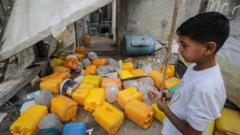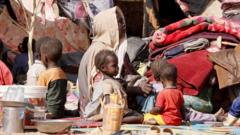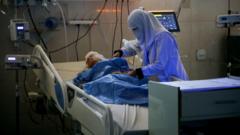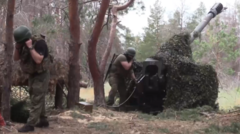As Sudan's military regains control over Khartoum, the once-prized National Museum lies in ruins, its artefacts looted or destroyed, symbolizing a significant loss in the country's cultural identity and history.
Sudan's National Museum: A Cultural Casualty of War
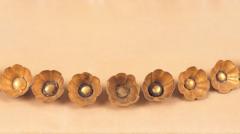
Sudan's National Museum: A Cultural Casualty of War
The wreckage of Sudan's National Museum reflects the broader devastation inflicted by two years of conflict, revealing the toll on the nation's cultural heritage.
The Sudan National Museum, a significant repository of Nubian history and rich cultural heritage, stands in ruins after two years of devastating conflict in the region. Once lined with exquisite artefacts and bustling with visitors, the museum has fallen victim to the violence and looting that has plagued Sudan, particularly during the power struggle between the military and the Rapid Support Forces (RSF).
The museum was a reflection of Sudan's illustrious past, showcasing sculptures from ancient civilisations that conquered parts of Egypt, as well as Christian frescoes that provided insight into centuries gone by. This once-vibrant institution served as a source of pride for local citizens, who could admire their history and heritage. However, since the outbreak of war, this pride has been replaced with sorrow as the military regains territory in Khartoum and the extent of the destruction becomes apparent.
Ikhlas Abdel Latif Ahmed, the director of Sudan's National Corporation for Antiquities and Museums, expressed profound grief over the loss of identity and history, stating that the RSF's actions have led to the disappearance of tens of thousands of artefacts either through destruction or illicit trade. The consequences of the war have been evident within the museum, where officials encountered shattered glass, bullet casings, and traces of profound looting during their visits.
Looting has also extended to other cultural institutions throughout Sudan, prompting Unesco to raise alarms about the ongoing threat to the nation's heritage. The museum was undergoing revitalization efforts prior to the war, with many treasures stored away, which may have facilitated their theft during the unrest. Officials speculate that some items may have been smuggled to the United Arab Emirates, amidst allegations of UAE funding for the RSF.
Ms. Ahmed lamented that many artefacts, such as a gold collar from the pyramid of King Talakhamani, remain unaccounted for. The Sudanese authorities plan to collaborate with international organizations like Interpol and Unesco to recover these invaluable pieces, but the road to restoration remains fraught with challenges and perils.
Experts argue that the RSF's actions are not mere acts of crime but rather a systematic assault on Sudan's historical identity, threatening the lasting legacy of diverse cultures that have thrived for thousands of years. The looting reflects a larger intent to dismantle the nation's historical narrative and rob the people of their collective memory.
The destruction of the National Museum parallels the experiences of many Sudanese citizens who have witnessed their homes occupied or their belongings stolen. With nearly 13 million people displaced since fighting erupted in 2023, the human toll of the conflict is staggering, with an estimated 150,000 lives lost.
Despite the challenges ahead, Ms. Ahmed remains hopeful for the future, longing to restore the National Museum and reclaim its lost treasures. "Inshallah [God willing], we will get all our collections back," she declared. "And we will build it more beautiful than before." Restoration is not only about recovering artefacts but also about reinstating the pride of a nation steeped in rich history.



